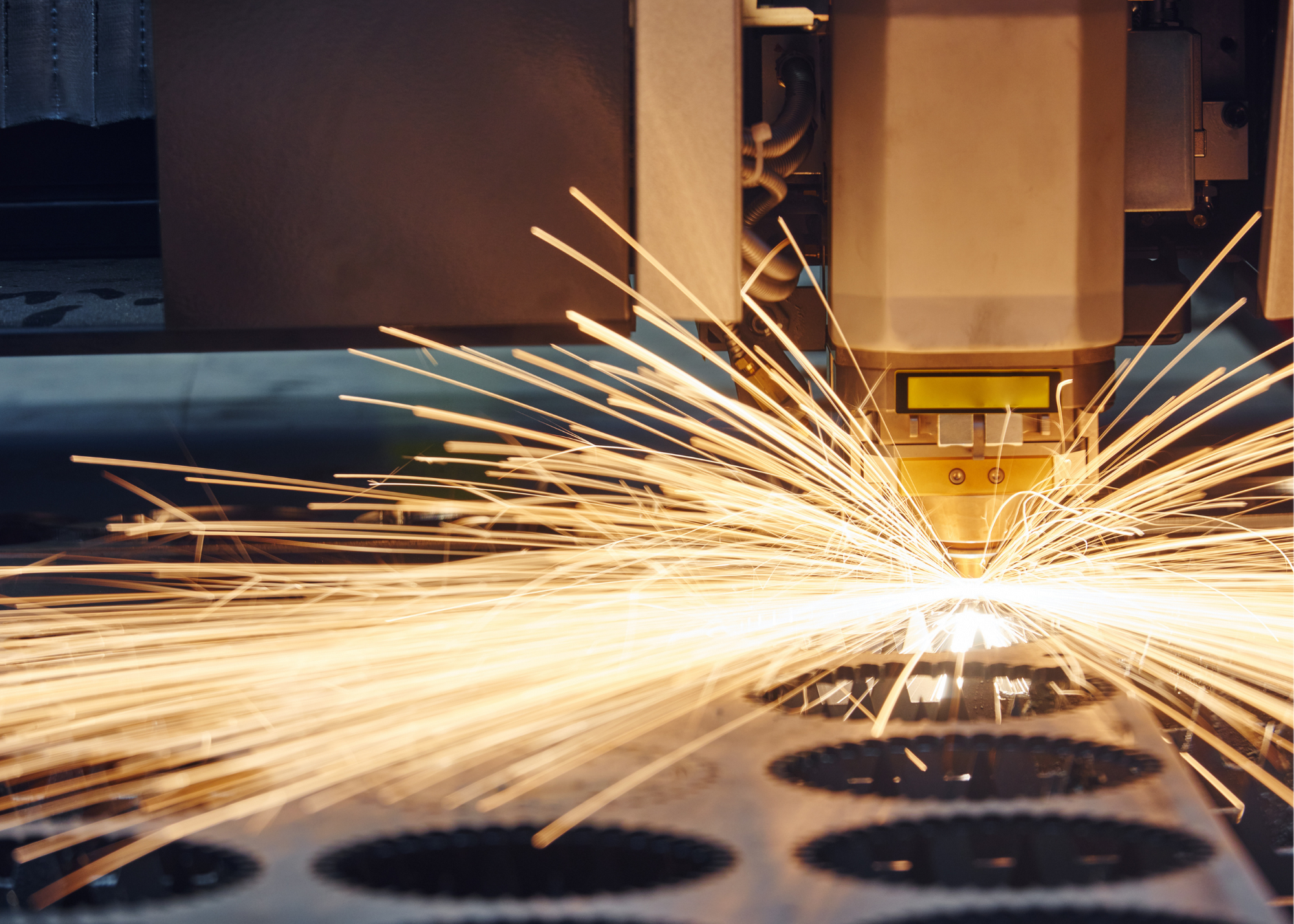Plasma Cutting vs. Laser Cutting

Manufactures have two main choices when it comes to cutting metals and other materials: plasma cutting and laser cutting. Both choices offer great and innovative solutions for cutting different metals. A question that is always asked by these manufactures are "Which one should I use?" - lets discuss both.
What is Plasma Cutting?
Plasma is high energy ionized gas. Plasma cutting works by taking the ionized gas and firing it out through a small nozzle. An external power source produces an electric current that adds more energy to the gas flow; this will turn the gas into a 40,000-degree F plasma arc. The system takes this plasma arc and is then used to melt and cut the workpiece and blows away the molten metal.
Plasma is suitable for cutting all metal materials. Its main use is to cut medium thickness plates. The advantages of plasma cutting are fast cutting speed, narrow cutting slots, small heat to the affected area, small deformation, and low operation costs. However, the vertical cross section and hardening incision has a 0.5 - 1.5 angle, being a disadvantage. Depending on the work piece, there may be secondary processes necessary before the part is finalized.
What is Laser Cutting?
A laser beam, which is generated by a laser device, is transmitted through a series of mirrors, directly to the workpiece. That laser beam will then focus on the workpiece surfaces and produce local heat at its focal point. This causes the hot spot of the workpiece to vaporize or melt, forming a slot. Simultaneously, the auxiliary gas is used in the cutting process to blow out the slag from the slot to cut the part away from the workpiece.
Compared to plasma cutting – there is little to no angle at the vertical cross section. The process is faster, and the deformation of the sheet is small - but the one disadvantage is that the cutting thickness is limited.
5 Ways a Laser Cutting Table is Better than Plasma:
1. Better quality of the cut - the cut can be very precise, a narrow incision and little deformation
2. Higher precision - Accuracy is around 0.1 mm and has a small chance of needing secondary process.
3. Faster - complex cuts can slow down turnaround time. Lasers can reach 10 m/min when cutting a thin metal sheet - beating plasma’s cutting time.
4. Less energy - This is more of an ecofriendly way because it uses less energy and saves on operating costs.
5. Variety of Material – Can cut more than just metal and can be used to cut textiles, PVC, leather, wood, plastic, etc. Being able to work with varied materials can give you a variety of different projects as well.
Both plasma and laser cutting have set areas where they are needed in this industry because they both have their own benefits. Comparing the two really comes down to what kind of material you are planning to cut and the thickness of it. This is what is best to remember when you need to determine whether plasma or laser will be more effective for your business.
For more information, call 888-327-7306 or email us at info@oxyfuelsafety.com

